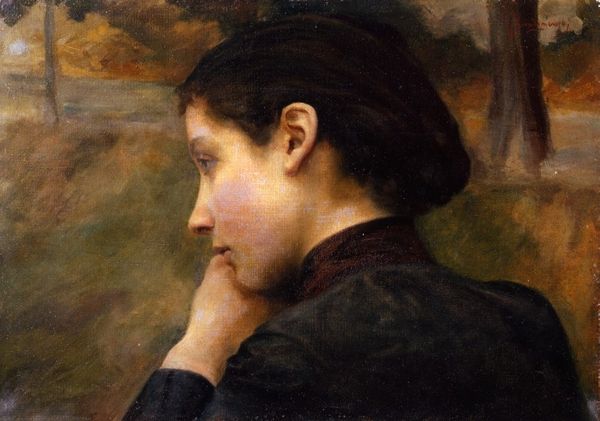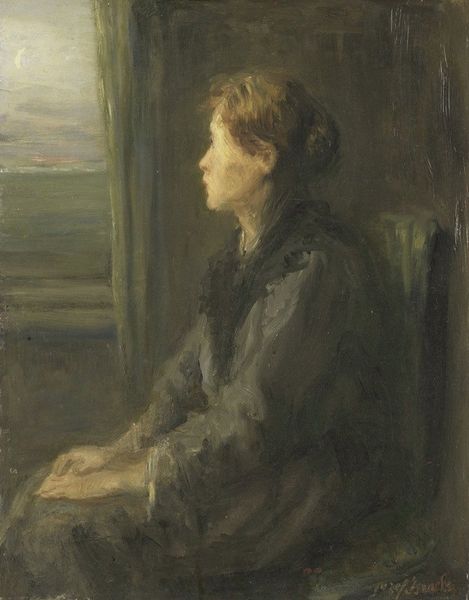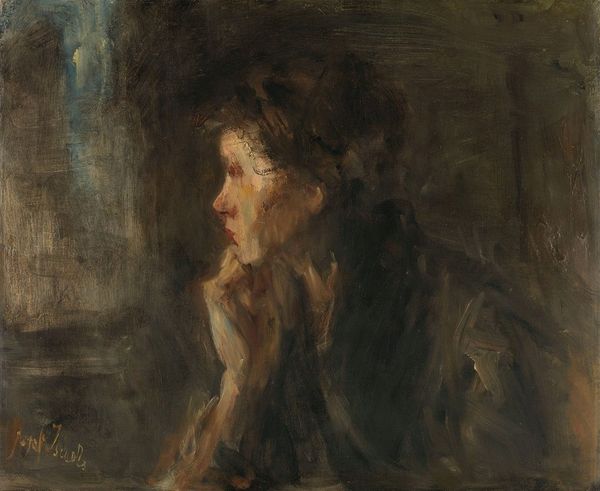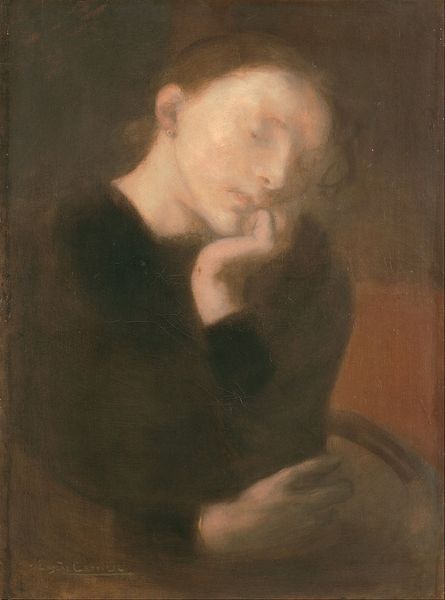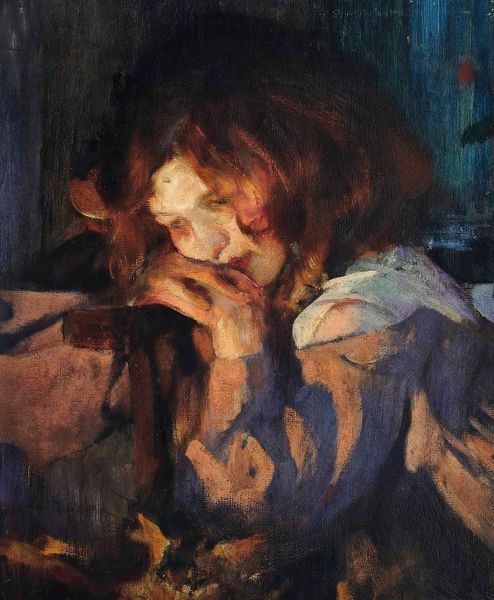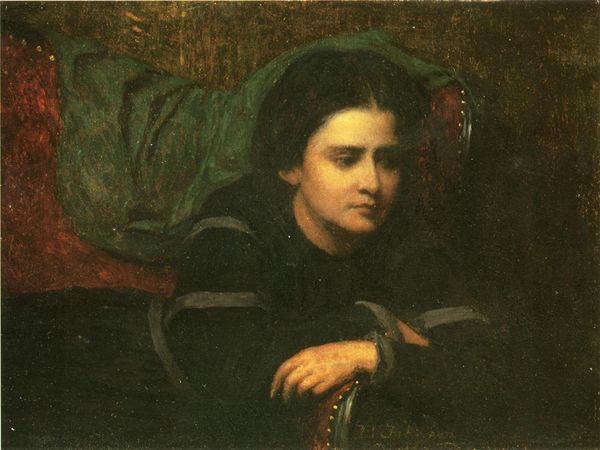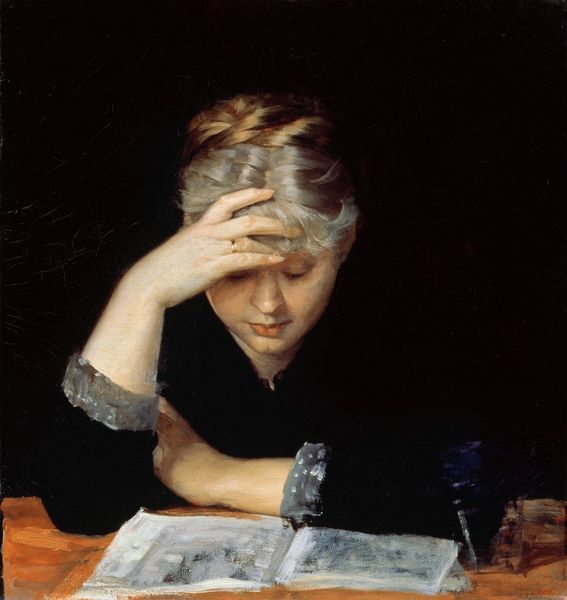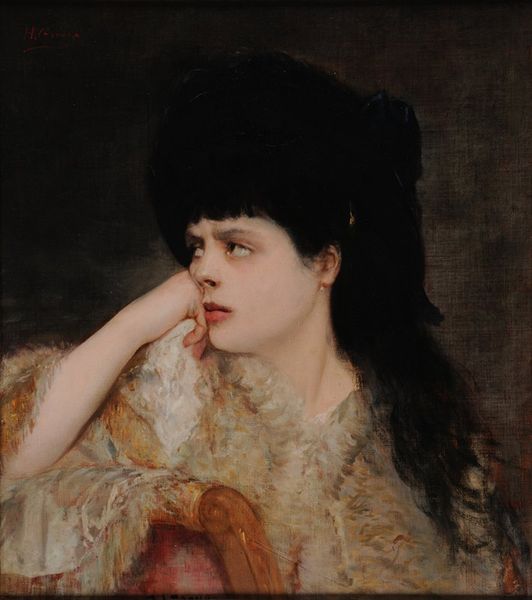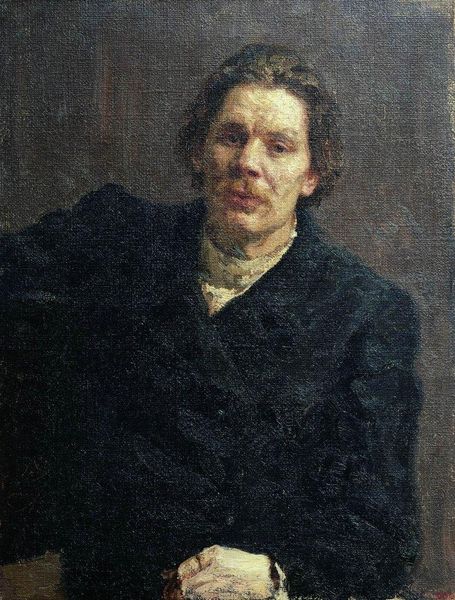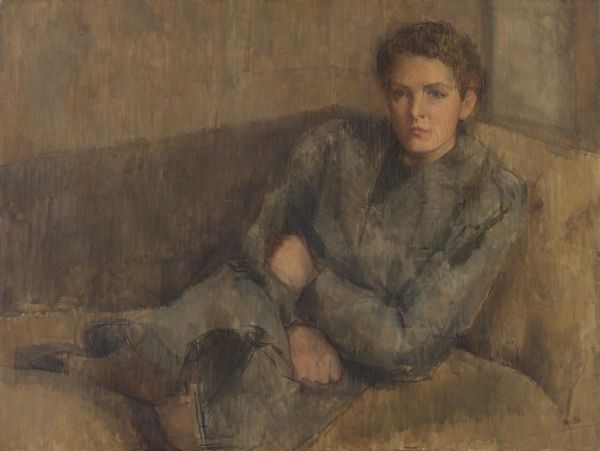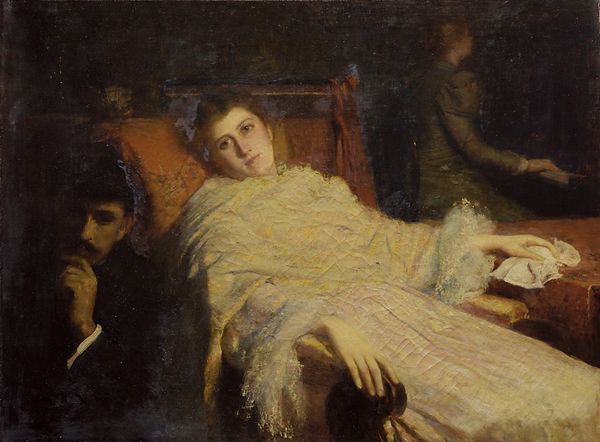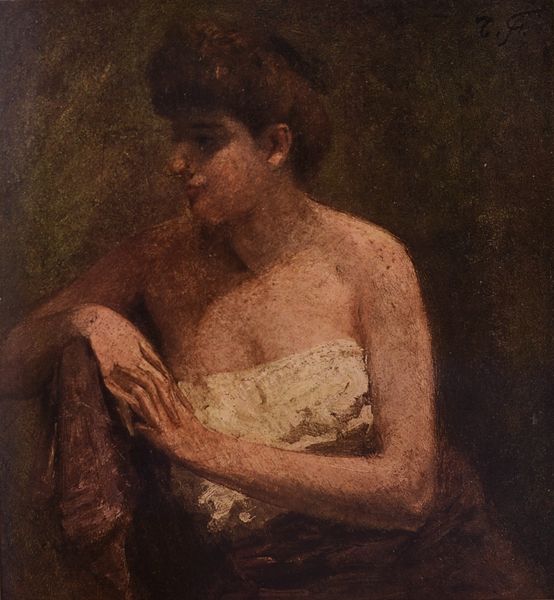
Copyright: Public Domain: Artvee
Curator: This is Jozef Israëls' ‘Malancholy,’ dating from the 1880s or 1890s. It’s an oil painting, showcasing the artist's impressionistic and intimate style. What are your first thoughts? Editor: A heavy stillness. The dark, muted palette makes it feel like peering into a very private, perhaps sad, moment. Curator: Israëls was deeply concerned with depicting the lives of ordinary people, often focusing on themes of sorrow and hardship. The visible brushstrokes and the subdued color scheme serve to amplify the emotional weight. Do you think the work participates in larger social and political discussions? Editor: Absolutely. The image circulated and shaped ideas of Dutch culture at the time. This piece romanticizes poverty by aesthetically drawing on the hardship. Israëls gained recognition by depicting intimate scenes of peasant life, effectively marketing images of his culture and its labor force to a wide audience. Curator: That's a key aspect. Israëls’ use of oil paint and a subdued palette isn’t just an aesthetic choice; it directly informs the melancholic mood and reinforces the sense of realism he aims for. We might consider, too, how the labor involved in painting contrasts with that of the figure. Editor: I find myself focusing on the texture—the cracking paint, the visible brushstrokes. There's an undeniable tactile quality to it, as if you could almost feel the weight of the woman’s grief or reflection right there on the canvas. It’s intimate, as much because of the artist’s touch as the subject matter. Curator: And the scale reinforces that intimacy, wouldn’t you say? This isn’t a grand historical painting meant for a palace, but something far more personal, intended perhaps for a bourgeois domestic setting. The rise of art markets certainly played a role here. Editor: Considering the wider art market helps clarify that intimacy. "Melancholy" feels very contrived and aware of its artifice to me when placed alongside images that were far more commonplace in this woman's day-to-day existence. It’s meant for the homes of those who don’t understand her life at all. Curator: That's a valid, important critique. By attending to the materials and the artwork’s placement in history, we gain a clearer sense of its effect on audiences and culture. Editor: Exactly, and for me, the piece truly shows the power dynamics within its subject. A potent reminder to really consider not only how it was produced, but how the work participated in the distribution of its message.
Comments
No comments
Be the first to comment and join the conversation on the ultimate creative platform.
